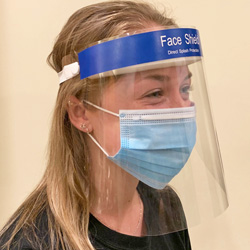Subject: Dog detection strategies beyond Hg...
From: "Eric Clark"
Date: May 16, 2011 10:46:51 AM EDT
Hello Colleagues,
Did you happen to see the Chemical & Engineering News (May 9, 2011, p
56) article regarding the cancer-sniffing dog? According C&EN, this
amazing dog can correctly identify positive colorectal cancer from a
patient's fecal specimen with 97% accuracy. As far as service animal
jobs go, this one must be considered by dogs to be the epitome of all
the sniffing jobs, leaving drug, explosive, and mercury-sniffing in a
distant 2nd, 3rd, and 4th place.
The next step for the researchers is to identify the compound that's
unique to cancer. Perhaps this dog could also serve as a GC detector by
sniffing what comes off of the chromatography column - the correct
fraction being when the dog's tail wags. But I don't believe using a GC
dog-detector is something research labs presently do do.
Eric
Eric Clark, MS, CCHO, CHMM
Safety & Compliance Officer
Los Angeles County Public Health Laboratory
Previous post | Top of Page | Next post
